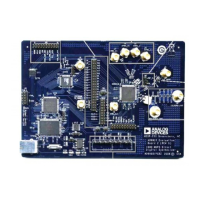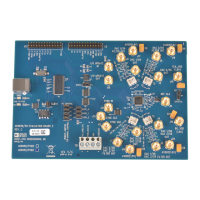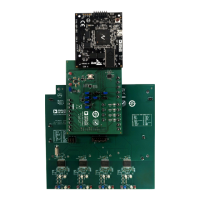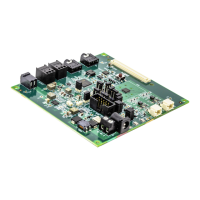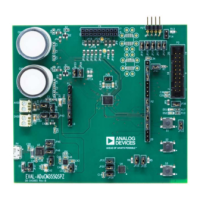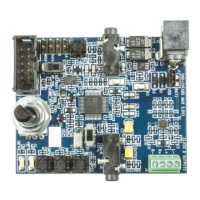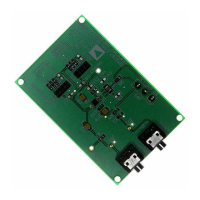AD9361 Reference Manual UG-570
| Page 51 of 128
RSSI PREAMBLE AND RSSI SYMBOL
The first RSSI calculation performed after the RSSI Delay counter
expires is stored in both the RSSI Symbol and RSSI Preamble
registers. The RSSI Preamble value remains fixed and does not
continue to update unless the algorithm restarts. The RSSI
symbol value updates at the end of each calculation as shown in
Figure 27. An exception is that the RSSI preamble words do not
update after a gain change (RSSI Mode Select settings 3’b011 and
3’b101).
The RSSI Symbol value is stored in 0.5 dB/LSB resolution. An
additional LSB is also available, and if this bit is used, the
resulting 9-bit word has a resolution of 0.25 dB/LSB. In either
case, the range is 0 dB to −128 dB (note the negative sign). As the
input signal power at the receiver increases, the RSSI value
becomes less negative.
The RSSI Preamble can also be treated as an 8-bit or 9-bit word.
The range and format is the same as the RSSI Symbol
RSSI RFIR
If the Rx Signal Path RFIR is used, RSSI uses the data from this
FIR for its calculation. If the Rx Signal Path RFIR is bypassed,
then it is still possible to use the RFIR for the RSSI data. The RFIR
for RSSI Measurement bits set the RSSI RFIR operation per the
following table.
Table 34. RSSI RFIR
RFIR for RSSI
Measurement (decimal)
RSSI RFIR Decimation Factor
and Filter Function
0 Decimate by 1 and bypass filter
1 Decimate by 1 and enable filter
2 Decimate by 2 and enable filter
3 Decimate by 4 and enable filter
RSSI GAIN STEP CALIBRATION
After the AD9361 digitizes and filters the signal, the RSSI
algorithm subtracts the gain of the receive path. The resulting
value is in dB and referenced to the input of the AD9361. If the
actual gain of the AD9361 is different from the gain used by the
RSSI algorithm, then as the receive path gain changes, the RSSI
word may differ from an expected value. RSSI error typically is
within 2 dB of the expected value, which is satisfactory for most
applications.
For greater RSSI accuracy, the AD9361 uses a gain step
calibration algorithm. Running this calibration does not change
the actual gain of the receive path but instead only affects RSSI.
LNA gain varies over frequency and the difference in gain from
one step to another varies as well. The AD9361 stores gain steps
as Max LNA Gain and differences from this maximum LNA gain
stored in an indirectly addressed internal table accessed by
Register 0x140 through Register 0x144. Maximum LNA gain
occurs when the LNA gain index = 3.
In combination with an external single tone provided at the
system input, the algorithm measures the actual gain steps to
0.25 dB precision and creates error terms that are added to the
calculated RSSI value. Error terms are calculated for each LNA
and mixer gain step. Each system runs this calibration as part of
its factory test routine so that RSSI is optimized for each unit. The
test fixture reads the resulting error terms out of the AD9361 and
stores them in nonvolatile BBP memory. In the field during
initialization, the BBP writes the error terms back into the
AD9361.
The first step, performed only once, is to determine the optimum
single tone amplitude. Provide a single tone within the channel
bandwidth and monitor the received data. Adjust the tone
amplitude until the received data is within a few dB of full scale
but not overloading. This will be the single tone amplitude used
during factory test. The calibration steps are:
1. Initialize the AD9361, making sure that the BB DC and RF
DC calibrations run as part of this routine. In addition, make
sure that BB DC tracking is turned on.
2. Put the AD9361 into the Alert state.
3. Table 35 shows the register values to use depending on the
LO frequency used. The next steps that program the step
values will use the values from this table.
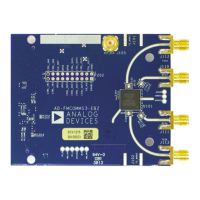
